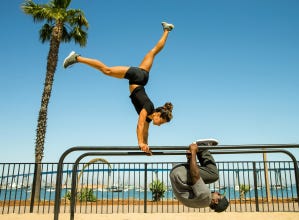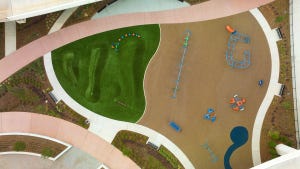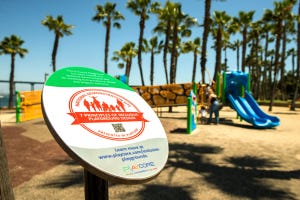Physical activity is important for maintaining overall fitness: healthy weight, healthy bones, mental and emotional well-being, strengthened immune system. Despite the many benefits, many people do not participate in regular physical activity. As a result, rates of overweight and obesity are much higher than a few decades ago, and that contributes to a major health challenge.
Obese persons are at a higher risk of hypertension, Type II diabetes, heart disease, and stroke. Some types of cancers are linked to overweight and obesity. Studies suggest regular physical activity can help prevent these conditions and improve the overall health and wellness of a community.
An Emerging Emergency
Less than 25% of adults meet the physical activity guidelines for aerobic and muscle strengthening. Mean body weight, body mass index (BMI) and waist circumference has increased dramatically over the past two decades. CDC data shows about 70% of adults over the age of 20 are overweight and about 40% are classified as obese.
By 2030, 13 states in America could have obesity rates above 60%. The medical cost of overweight and obesity is expected to exceed $60 billion by 2030 in the United States, alone. Worldwide medical costs will increase by hundreds of billions of dollars.
The U.S. Surgeon General estimates we may see the first generation in recorded history that is less healthy and lives shorter lives than their parents.

Outdoor Fitness Improves Quality of Life
Health implications aside, a sedentary lifestyle limits a person's ability to perform daily tasks and reduces the enjoyment of activities. Creating spaces for adults to participate in physical activity not only helps reduce and prevent physical disease, but it also helps contribute to emotional well-being. Studies suggest exercise may enhance cognition, protect against neurodegenerative disorders, and reduce anxiety and depression.
An exercise that lasts as little as ten minutes has been shown to improve mood and help people feel less fatigued. People report that exercising outdoors seems more enjoyable, perhaps because the perception of exertion is reduced when enjoying the outdoors. Natural environments have long been linked to enhanced mood.
Barriers to Better Health
While many might think the only barrier to better health through physical activity is willpower or personal determination, there are other obstacles beyond the control of the participant. In some communities, there is a lack of access to high-quality outdoor fitness equipment. In some neighborhoods, the cost of a gym or fitness center membership is prohibitive.
Other people are hindered by a lack of knowledge on how to exercise, lack of support from others to continue with their efforts, or a misunderstanding of what kinds of exercise are beneficial to their overall health and functional fitness.

In the people we surveyed, we learned a lack of child care or appropriate activities for children while parents exercise was a barrier. Some people told us the fear of not knowing how to start was holding them back. One of the most frequent responses we heard was simply a lack of time.
Busy lifestyles filled with work, family, and other commitments crowded out any remaining time for exercise and personal wellness.
Outdoor Fitness Parks Promote Better Health
According to the National Parks and Recreation Association (NRPA), approximately 80% of people visit local parks on a regular basis. Of those, according to a RAND study, a high percentage (nearly 70 million) are adults who want to use the parks as a place to exercise on a regular basis. That makes parks the perfect choice to create outdoor fitness spaces.
Since many parks also have, or plan to build, playgrounds for children, they are a space for multigenerational recreation. Public parks remove two of the aforementioned barriers to regular exercise: access to a fitness area and activities for children while parents exercise.

Outdoor fitness parks are free to members of the community. With the right site selection, you can place fitness parks within close proximity to families, making it fast and easy to find a place to exercise. Family-focused fitness activities like outdoor obstacle courses make it fun for entire families to exercise together, and to experience some friendly competition.
To remove another barrier to exercise, it's important to help people understand how to use the equipment properly. Labels on fitness equipment, signs throughout the space, or personal trainers can help make sure people know what to do and how to maximize the experience.
In some communities, the outdoor fitness park is a preferred location for group fitness classes. Participants enjoy the camaraderie of working as a team, and appreciate the benefits of being outdoors.
Join the Movement
If you're ready to make a difference in your community by creating an outdoor fitness park for adults, or multigenerational recreation space for entire families, contact the GameTime outdoor fitness expert in your community. Together, we can create dynamic, active spaces where communities are made stronger.





